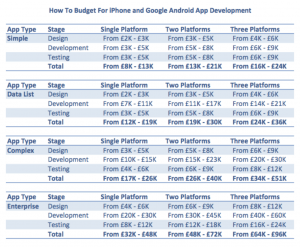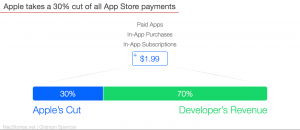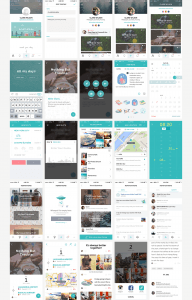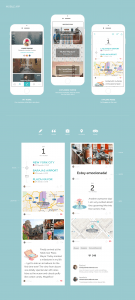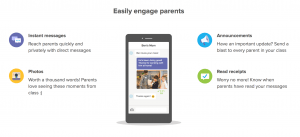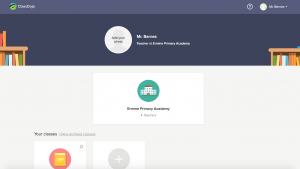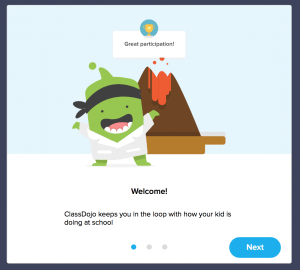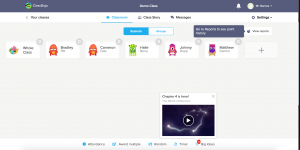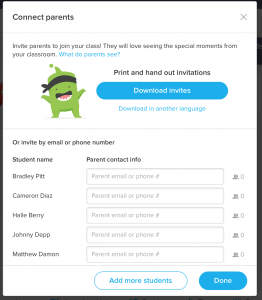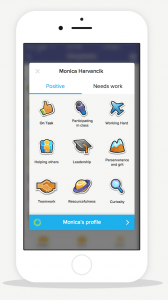Proposing a budget
Budget wise I would have to consider whether I am going to make the service available online on a website, keep it app based or have both, each to their own affecting the price dramatically. Initially I believe I would start advertising the service as an app to be used by the teacher in classrooms and the parent at home as being able to monitor the child whenever and wherever is a main feature of the services advantages. However if there was a demand after the app had been taken to a point where functionally successful, there could be the opportunity to turn the app into a server that could also run on a website.
App store prices
To get the app on the app store I would have to pay to join the Apple’s app developer program, this will cost me 99 USD per membership year.
Publishing to Google play is free
The cost of a website according to the company expert market listed on their website http://webdesign.expertmarket.co.uk/how-much-does-website-cost#First%20Website
The cost of a first website will roughly be:
Domain name and hosting – £0.99-£50
Domain names need to be unique as two companies cannot share one name. A .co.uk or .biz are the cheapest options costing around £3 a year, whilst the more popular .com domain costs as much as £10 a year.
Every website needs to be hosted on a web server. Again there are free options available, via Google for example, but these are limited and not always reliable.
Hosting on a web server containing other sites usually costs around £10 a month. To have your own server is much more expensive with costs averaging around £60 a month.
Simple design work – £400-£600
Ongoing costs – £0-£10 per month
Overall cost – £400-£770
The cost of a small business website will roughly be:
Domain name and hosting – £0.99-£100
Design work – £600-£1,200
Programming – £900-£2,000
Ongoing costs – £0-£30 per month
Overall cost – £1,000-£3,500
The cost of a medium-sized website will roughly be:
Domain name and hosting – £0.99-£300
Design work – £800-£1,800
Content creation (in-house or freelance) – £100-£1,000
Programming – £1,000-£3,000
Ongoing costs – £0-£60 per month
Overall cost – £1,800-£6,700
Adobe Creative suite costs £45.73
App Team:
- Project Manager
- Business Analyst
- 2-4 developers
- UX/UI designer
- QA engineer
- Backend Developer
- Admin
- Panel Designer
Crew will be paid by experience and sklll level and usually attract an hourly cost of £25-30.
Realisticly the whole project will take about 6 months to complete.
Other potential costs to consider:
- API integration
- Custom design components
- Heavy tech components
- Admin panel development
- Marketing and promotion
- Support & updates
- Backend maintenace/BaaS subscription
- Cloud hosting
The Concept
The Concept
Many children with learning difficulties of all ranges are taught in mainstream schools as opposed to specialist schools. This can cause problems for both parents and teachers, as there are many schools that don’t have enough facilities or resources to give these children the special attention that they need. This can lead to these children (especially those with a moderate learning difficulty) getting lost in the rest of the class and behind in their learning, without anyone knowing the specific reasons behind this.
I wish to create an app to aid teachers and parents in monitoring a child’s learning difficulty and behavior in relation to education, at home and in school. The app will enable the teacher to be able to report on a child’s behavior and mood during certain classes to develop an understanding of the problem areas. Learning the effects of the learning disability on the child’s education and behavior will help both the parent and the teacher in discovering the best course of action in assisting the child, create a method of communication between the parent and teacher and potentially give parents more peace of mind when going through the diagnosis process and reduce some of the effects it can bring.
The app will act as a conversation between teacher and parent as the parent will be able to input information on the child’s behavior at home, for example how they cope with completing homework tasks. The teacher will then be able to provide behavioral traits on the child during school. There will then be a report at the end of the day/week with the analytics and correlation of this information that both the parent and teacher can view. This conversation will lead to the parent feeling as though they have a bigger role in their child’s education and the teacher will be able to determine the best course of action for helping the child with their learning difficulty. This could be extra help in school with specific subjects or exercises that the parent could do at home with the child. Finding out what is motivating to the child will help the teacher make the curriculum more personalized to that child’s needs as opposed to assuming they will be able to follow along with the rest of the class. However the app will not alienate the child, it is up to the parent and the teacher whether the child is aware of the app or not and whether he/she takes an active role in it. There is the potential for the child to have their own say in the logistics of the app.
The app will be easy to use and have a friendly interface so that it is enjoyable to use and less of a chore. The app will focus on the positive rather than the negative, encouraging progress from the child and rewarding achievements whilst also highlighting areas of improvement for future progress. It will be about working with the student to cater learning to what is best for them, not fighting them to make them learn the same way as everyone else. In a Blended Learning style, the outcome of the project is to be used alongside traditional teaching methods and not just one tool to rule them all.
The Pitch
Many children with learning difficulties of all ranges are taught in mainstream schools as opposed to specialist schools. This can cause problems for both parents and teachers, as there are many schools that don’t have enough facilities or resources to give these children the special attention that they need. This can lead to these children (especially those with a moderate learning difficulty) getting lost in the rest of the class and behind in their learning, without anyone knowing the specific reasons behind this.
A potential solution to combat this problem is an App to aid teachers and parents in monitoring a child’s learning difficulty and behavior in relation to education, at home and in school. The app will enable the teacher to be able to report on a child’s behavior and mood during certain classes to develop an understanding of the problem areas. Learning the effects of the learning disability on the child’s education and behavior will help both the parent and the teacher in discovering the best course of action in assisting the child, create a method of communication between the parent and teacher and potentially give parents more peace of mind when going through the diagnosis process and reduce some of the effects it can bring.
The app will act as a conversation between teacher and parent as the parent will be able to input information on the child’s behavior at home, for example how they cope with completing homework tasks. The teacher will then be able to provide behavioral traits on the child during school. There will then be a report at the end of the day/week with the analytics and correlation of this information that both the parent and teacher can view. This conversation will lead to the parent feeling as though they have a bigger role in their child’s education and the teacher will be able to determine the best course of action for helping the child with their learning difficulty. This could be extra help in school with specific subjects or exercises that the parent could do at home with the child.
Finding out what is motivating to the child will help the teacher make the curriculum more personalized to that child’s needs as opposed to assuming they will be able to follow along with the rest of the class. However it will not alienate the child, it is up to the parent and the teacher whether the child is aware of the app or not and whether he/she takes an active role in it. There is the potential for the child to have their own say in the logistics of the app.
The app will be easy to use and have a friendly interface so that it is enjoyable to use and less of a chore. The app will focus on the positive rather than the negative, encouraging progress from the child and rewarding achievements whilst also highlighting areas of improvement for future progress. It will be about working with the student to cater learning to what is best for them, not fighting them to make them learn the same way as everyone else. In a Blended Learning style, the outcome of the project is to be used alongside traditional teaching methods and not just one tool to rule them all.
Research – Example ways of displaying APP prototypes
Designing for an audience
My audience is mainly the parent and the teacher who will be working together to utilise the app.
What will the parent and the teacher be looking for in the design?
- Professional
- Easy to use
- Quick
- Positive
- Trustworthy
- Informative
- Intuitive
- Conversational
- Personalizable
Here are some examples of apps that have this feeling in their design:
However it is also important to incorporate a childish gamified element to the app. Because the app is about children, education and could potentially be opened up to young students in the future, the app also needs to be friendly and have an element to it that makes it more fun to use. Examples of this are below:
https://www.behance.net/gallery/32293399/VOLO-Your-Travel-Journal
https://www.behance.net/gallery/13717129/Period-Tracker-iPhone-App
https://www.behance.net/gallery/33301801/Ridesafe-Conceptual-app-for-Android
Research – Critical Evaluation of Class Dojo
Class Dojo – https://www.classdojo.com
ClassDojo is an behaviour management tool for the classroom that can be used both on an app and web basis. It is aimed at teachers, parents, students and school leaders and is designed to help increase student participation and communication between parents and teachers by creating an online classroom.
Feature of ClassDojo:
- Organising students into class groups online to encourage teamwork
- Award the class for working together and keep track of points to work towards a class goal
- Track homework, participation and attendance
- Using countdowns and timers during individual or group work time to keep students focused
- Create a ‘class story’ to share classroom moments, photos and updates with parents
- Give individual feedback to students
- Parents can see a daily report at the end of the day
However, ClassDojo has received a lot of criticism… here are what the critics say:
6 reasons to reject ClassDojo:
- ClassDojo gets character education wrong. Children’s psychiatrist Ross Greene reminds us that when a situation demands a child’s lagging skills, we get unsolved problems. Because we know that misbehaviour is a symptom of much more complex and interesting problems, we need to see these unsolved problems as teachable moments. ClassDojo reduces children to punitive measures where the misbehaviour is seen as nothing more than an inconvenience to the teacher that needs to be snuffed out. ClassDojo judges and labels students by ranking and sorting them and distracts even well-intentioned adults from providing children with the feedback and the guidance they need to learn.
- ClassDojo gets motivation wrong. There are two kinds of motivation: intrinsic & extrinsic. The problem here is that we need to stop asking ‘How motivated are my students?’ and start asking ‘How are my students motivated?’. Motivation is not a single entity that you either have a lot or little of. There are two kinds: intrinsic and extrinsic. If you are intrinsically motivated then you are doing something for its own sake; if you are extrinsically motivated, you are driven to do something, or not do something, based on a reward or punishment that may be waiting for you. But that is not even the interesting part—the real catch here is that these two kinds of motivation tend to be inversely related. When you grow students’ extrinsic motivation by bribing them (or threatening them), you run the risk of growing their extrinsic motivation while their intrinsic love for what you want them to learn shrivels. Rewards can only ever gain short-term compliance from students when what we really desire is their authentic engagement.
- The public nature of ClassDojo is inappropriate. Making this kind of information for all to see is nothing more than a way of publicly naming and shaming children. I know very few adults who would put up with this kind of treatment at their workplace, so then why would we ever subject children to this? A doctor would never post their patients’ health records publicly, and an accountant would not post their clients’ tax records publicly. A lawyer would not post their clients’ billing information publicly, nor would a teacher post their students’ Individual Program Plans for all to see. So why would a teacher ever think that it would be appropriate to share ClassDojo publicly? To do so would be unprofessional and malpractice.
- ClassDojo pits adults and children against each other. Teachers who use ClassDojo spend a great deal of their day catching kids being good and catching kids being bad. Point systems, like token economies, pit children and adults against each other and ultimately rupture relationships through power struggles. With ClassDojo, children come too see their teachers less as safe and caring allies and more as judges-in-waiting whom they learn to keep their distance.
- ClassDojo can only ever be experienced as coercive and manipulative. Like Alfie Kohn says, rewards and punishments are not opposites — rather they are two sides of the same coin, and they don’t buy us very much other than short-term compliance. ClassDojo is by definition a way to do things to kids when we should be working with them. And for those who use ClassDojo only for the positives and the rewards, remember that with-holding a reward or removing a privilege can only ever be experienced as a punishment. The best teachers understand what Jerome Bruner meant when he said, “Children should experience their successes and failures not as reward and punishment, but as information.”
- ClassDojo prepares children to be ruled by others. School already places a premium on blind obedience and mindless compliance, and an App like ClassDojo that implicitly and explicitly makes following the rules the primary goal of school prepares children to be ruled by others. When we allow operant conditioning to infect the classroom, we see children less as active, free thinkers and more as passive, conditional objects. Under these conditions, Attention Deficit Hyperactive Disorder (ADHD) is less likely to be a problem than Compliant Acquiescent Disorder (CAD). It’s important to remember that mindless compliance is responsible for far more of the atrocities against human kind than needless disobedience.
A parents concerns:
“As a parent, I have a few concerns about ClassDojo that I would want to see addressed by the teacher if it were being used in my child’s classroom. First, I would like more clarity on ClassDojo’s privacy policies than the difficult-to-parse legal language on their website. Second, I have some concerns about how publicly displaying points to an entire classroom of students might impact particularly sensitive kids. ClassDojo offers many different ways to use its product, including anonymous avatars and not displaying points at all. And, finally, I’d like to ensure that ClassDojo was just one tool, albeit a very powerful one, in the teacher’s classroom management arsenal, and that other tools like individual conversations about problem behaviours and smiles or a quick word of praise for good behaviours were still being used.”
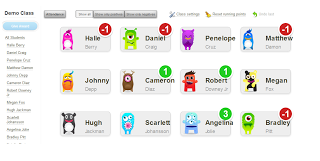 ‘A major concern is that the point system that the app operates by publicly shames students infront of their classmates, which isn’t motivating and doesn’t encourage longterm change. If you are a child who is usually on task and doing well, but sometimes slips up, your mistakes are now made BIGGER. Your occasional goof ups become public errors, and they suddenly become a much bigger deal. Everyone has bad days sometimes. Let’s imagine that it is not your best day, or worse, it is a terrible day. Everything seems to be going wrong. We all have those experiences. If you are in a classroom where that is understood, and your teacher and peers accept you with an attitude of forgiveness and a fresh start, your next day can be good. You know you can go back to school and try again. However, if you are in a classroom where your failures are publicly displayed, you are likely to return to school anxious. You are embarrassed and fearful of having the same bad day again.’
‘A major concern is that the point system that the app operates by publicly shames students infront of their classmates, which isn’t motivating and doesn’t encourage longterm change. If you are a child who is usually on task and doing well, but sometimes slips up, your mistakes are now made BIGGER. Your occasional goof ups become public errors, and they suddenly become a much bigger deal. Everyone has bad days sometimes. Let’s imagine that it is not your best day, or worse, it is a terrible day. Everything seems to be going wrong. We all have those experiences. If you are in a classroom where that is understood, and your teacher and peers accept you with an attitude of forgiveness and a fresh start, your next day can be good. You know you can go back to school and try again. However, if you are in a classroom where your failures are publicly displayed, you are likely to return to school anxious. You are embarrassed and fearful of having the same bad day again.’
Although the outcome of my project will be different to ClassDojo in many ways, there are some similarities. As you can see from the evidence above ClassDojo however, has a lot of problems and potential pitfalls. The outcome of my project will aim to avoid these problems and improve upon them to ensure it doesn’t suffer from the same critiques as ClassDojo. For example my service will not pit children against each other, there will be no ranking or points system. It will not focus on whether the child has been ‘good or bad’ but instead focus on how they are coping in certain lessons, whether they are distressed or frustrated for example in Maths but enthusiastic and content in English. It will do this not by a points system but by a system that displays their mood with the potential to elaborate on why they are in this mood. The service will not be available for the whole class to see, as the main aim of the service is to help children with learning difficulties and their parents, so it will be personal to each child and their parent.
The service will act as a conversation between the teacher and the parent as the parent will also be able to input information on the childs behaviour at home, for example completing homework tasks. It will be up to the parent and the teacher as to whether the child is aware of the device. The teacher should not get overwhelmed with the task as the outcome of the project will be easy to use and will not be for every single child and their parent in the class room, it will instead be reserved for children with moderate to severe learning difficulties. In some situations if a child has an assistent teacher or special helper that sits in class with them, this task of monitoring their behaviour could be given to them as to not overwhelm the main teacher. The service will enable teachers to be a bystander when observing exactly when their students are engaged and motivated to discover the best methods of teaching them. The service will tend to focus on the positive improvements that the student is making in class and even when introducing negatives it will be for the benefit of the student or the teacher with the chance to improve, also taking into account that sometimes students can just have bad days. It will be about working with the student to cater learning to what is best for them, not fighting them to make them learn the same way as everyone else. In a Blended Learning style, the outcome of the project is to be used alongside traditional teaching methods and not just one tool to rule them all.
Overall I believe that these significant differences will make the outcome of the project unique from ClassDojo, if not an improvement on it.
Sources:
http://www.joebower.org/2014/11/6-reasons-to-reject-classdojo.html
Thinking About Classroom Dojo – Why Not Just Tase Your Kids Instead?
